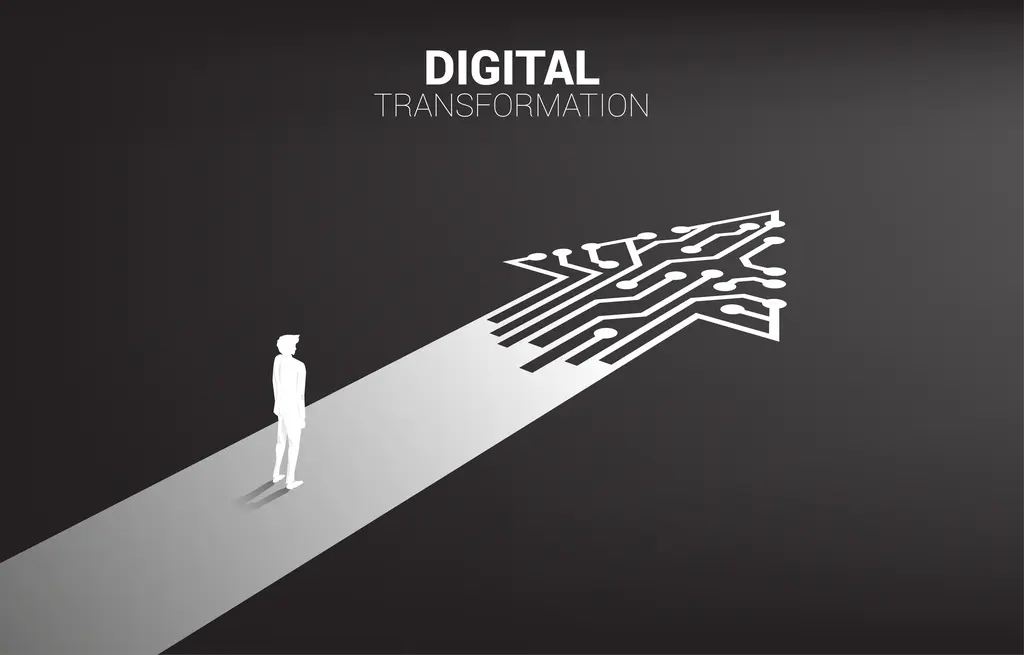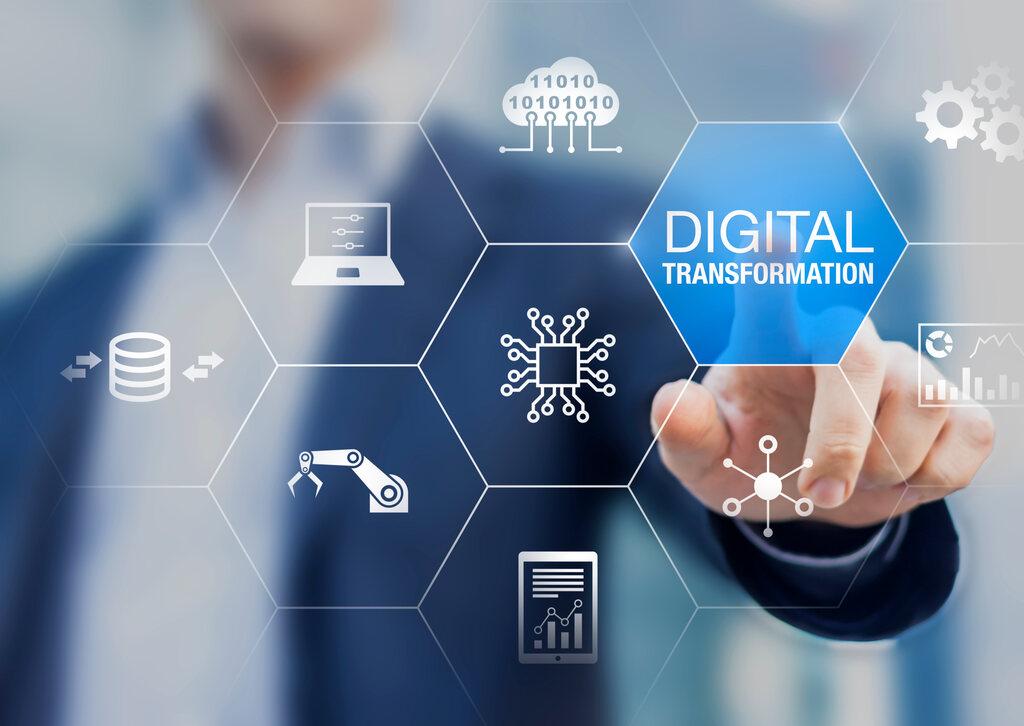Talk about digital transformation is everywhere! But definitions of the term seem to vary based on who’s talking. The concept is often misunderstood as simply adopting new tools and technologies. In reality, true digital transformation is a strategic shift in how businesses create value and evolve. From AI-powered logistics to mobile-first experiences, companies across industries are modernizing operations and reimagining customer journeys with the goal of achieving agility, scalability, and relevance in a digital-first economy.
While it might be tempting to lump digital transformation into the category of "tech trends," it's far more than that. It represents a cultural and operational rethinking that redefines how an organization works from the inside out. Companies embracing this shift are doing more than installing software—they're reshaping their businesses to serve customers in faster, smarter, and more connected ways.
What is digital transformation?
Digital transformation is an umbrella term that captures how organizations use technology to create or modify processes, culture, and, most importantly, customer experiences.
While digital transformation involves introducing modern digital tools—like cloud computing and AI—true transformation begins with mindset.
“Digital transformation is about transforming people—understanding their day-to-day lives in order to deliver things to them,” says Maria Mujica, VP of Ecommerce LATAM at Mondelēz International.
The digital transformation journey
The digital transformation mindset shift often requires letting go of "the way we've always done things" in favor of new approaches that prioritize agility and empathy. Early wins—like automating repetitive tasks or improving data access—build momentum. Over time, these improvements cascade into broader innovations. Analyst Brian Solis outlines six stages of digital transformation:
- Business as Usual: The company operates with traditional systems and processes. Change is minimal, and digital tools are used sporadically.
- Present and Active: Teams begin experimenting with digital tools, but efforts are siloed and lack strategic alignment.
- Formalized: Digital efforts are centralized, and leadership begins setting digital goals and allocating resources.
- Strategic: Cross-functional collaboration emerges. Digital transformation becomes part of long-term business planning.
- Converged: Technology, operations, and culture are aligned. Digital becomes core to how the business functions.
- Innovative and Adaptive: The organization is agile and forward-looking, consistently iterating and innovating across all areas.
Reaching the top tier requires companies to align tools, teams, and strategies.Take, for example, the transition from physical retail to ecommerce. While setting up an online store is one part of the journey, that alone won’t magically transform a business. Without synchronized logistics, marketing, and customer service, digital efforts fall short. That disconnect is something many companies experience, and the friction created by these gaps can frustrate both customers and employees.
In many ways, digital transformation starts with a willingness to question the status quo. To move forward, businesses must ask:
- Are we enabling real-time collaboration?
- Are we built for a mobile-first, always-on customer?
- Do we foster a culture of experimentation and growth?
Often, the biggest challenge isn’t technology—it’s inertia. Legacy systems and habits can hold businesses back. But in a market defined by speed and personalization, staying static is the real risk.
How digital transformation is reshaping business models

Digital transformation is touching every corner of the business world. While headlines often focus on flashy technologies, the real value lies in how these innovations are applied to meet changing customer expectations, reshape internal processes, and drive new growth models. Whether it’s redefining how people shop, work, or interact with services, transformation is creating smarter, faster, and more connected businesses.
Ecommerce evolution
Ecommerce is no longer an optional add-on for leading retailers and manufacturers—it has now become the primary revenue driver. Consumers shop on mobile devices, discover products on social media, and expect seamless, one-click checkouts.
Today’s ecommerce strategies include:
- Shoppable social content (TikTok, Instagram)
- Streamlined checkout experiences
- Mobile-first design
- Influencer and user-generated content
This change isn’t just about keeping up with competitors. In 2024, mobile accounted for 55% of all Black Friday online sales. It’s a clear signal: mobile commerce is the new default.
What this means for businesses is that every interaction—from product discovery to purchase confirmation—must be optimized for immediacy and delight.
Industry-wide shifts
Digital transformation is not confined to ecommerce. It’s reshaping how entire industries operate, solve problems, and serve their audiences:
- Healthcare: Telehealth services and digital medical records have improved access to care and helped streamline patient experiences. Digital diagnostics and remote monitoring are improving outcomes and resource efficiency.
- Finance: Fintech companies are disrupting traditional banking models with mobile apps that offer peer-to-peer transfers, instant credit scoring, and frictionless user experiences. As a result, legacy banks are accelerating their own digital adoption.
- Manufacturing: Smart factories use IoT sensors, machine learning, and robotics to monitor performance, reduce downtime, and boost productivity. Predictive maintenance and automation are turning manufacturers into real-time, data-driven enterprises.
Even traditionally slow-to-change sectors are realizing that digital transformation is key to staying competitive, resilient, and aligned with customer needs.
Reimagining internal workflows and operations
While digital transformation often focuses on customer-facing experiences, internal systems matter just as much.How businesses choose to handle internal workflows can either supercharge productivity or slow it to a crawl. In the 2023 KPMG Global Tech Report, 63% of companies cited measurable performance gains from digital initiatives.
Think of it like this: the best customer experiences are built on efficient internal operations. When your systems talk to each other, your people can move faster. And when your teams are equipped with digital tools, they spend less time fighting processes and more time solving problems.
Rethinking customer relationships

Digital transformation fundamentally changes the way businesses interact with their customers. It shifts the focus from transactional relationships to more meaningful, personalized engagements that enhance customer satisfaction and loyalty.
Businesses are now leveraging data analytics, AI, and machine learning to gain deeper insights into customer behaviors and preferences. This enables them to tailor their offerings and interactions to meet individual needs more effectively through:
- Personalized product recommendations
- Real-time support via chatbots or virtual assistants
- Tailored communications based on customer behavior
The future of commerce is customer-centric. Brands that lead with empathy and data are the ones that build lasting loyalty.
Business growth through digital transformation

Digital transformation can have profound impact on business growth by unlocking new opportunities and enhancing overall performance. The right digital strategy doesn’t just improve efficiency—it propels the business forward. When transformation is done right, it becomes a growth engine. Technology enables better decision-making, faster innovation, and broader market reach. Whether you’re scaling a startup or evolving a legacy brand, digital transformation helps unlock the next phase of growth.
Increased Revenue & Reach
Digital channels open new markets and streamline sales.
Example: Stanley Black & Decker’s B2B platform reduced lead times and grew revenue through smarter ordering and integration.
Operational Efficiency
Automation frees up resources to focus on innovation.
Example: Mondelēz automated inventory and ordering with VTEX, cutting costs and boosting efficiency.
Customer Loyalty
Personalized experiences and seamless service increase retention and advocacy.
Competitive Edge
Digital-native companies adapt faster, respond smarter, and outperform legacy players. Agility is the new differentiator.
Real companies, real transformation
The best way to understand digital transformation is to look at companies putting it into action. From global manufacturers to consumer brands, businesses are using digital tools to create real impact. These examples show how strategy, technology, and execution come together to create scalable, future-ready operations.
Stanley Black & Decker
Stanley Black & Decker (SBD), a global leader in tools and security solutions, embarked on a digital transformation journey to enhance and integrate their B2B and B2C commerce capabilities.
SBD leveraged its 180-year legacy of excellence to embrace a forward-thinking approach in digital commerce. Recognizing the growing complexity of modern B2B operations, the company partnered with VTEX to create a unified commerce platform for its ecommerce strategy.
With VTEX, SBD unified its B2B and B2C operations under one platform. Key benefits:
- Real-time ERP integrations
- Bulk ordering and guided selling tools
- Reduced maintenance and faster rollouts
- API-driven architecture for scalability

VTEX's robust API-driven architecture also allowed SBD to introduce guided selling tools and automate critical processes, like procurement integrations using Trade Centric’s middleware.
This strategic partnership not only improved operational agility but also opened new revenue streams, reducing maintenance costs and enabling future scalability. As SBD continues to evolve its roadmap with innovations like AI-assisted Guided Selling, our partnership underscores the transformative power of digital commerce in enhancing global B2B operations.
Mondelēz
Mondelēz, a leading global snack company, leveraged VTEX to transform their B2B2B commerce operations. Faced with the challenge of managing complex supply chains and diverse customer needs, Mondelēz sought a solution that could offer flexibility and scalability.
Our partnership resulted in a strong platform to bring their online and offline sales together, making sure their business partners enjoyed a smooth and consistent experience no matter how they shopped.
With VTEX tools like automated order processing and customizable storefronts, Mondelēz was able to fine-tune their sales strategies, keep better track of inventory, and offer personalized experiences to their customers.
VTEX helped consolidate Mondelēz’s B2B2B operations, enabling:
- Seamless omnichannel sales
- AI-powered recommendations
- Automated backend processes
- Scalable storefronts for diverse markets
Learn more about Mondelez’s digital transformation with VTEX
Embracing the digital future
Digital transformation isn’t optional. It’s how resilient businesses build future-ready operations processes, elevate their customer experiences, and grow sustainably. Companies that embrace this change aren’t just keeping pace—they’re setting the pace. They recognize that transformation is a journey of continuous learning, rapid iteration, and bold thinking.
If you're standing still, you're already behind. But if you're willing to invest in the right technology and rethink how your business works, digital transformation becomes your competitive edge.
Ready to lead the future of commerce? Request a VTEX demo and start your transformation today.
